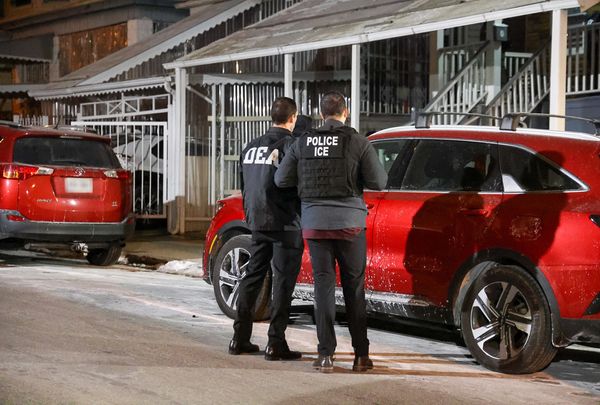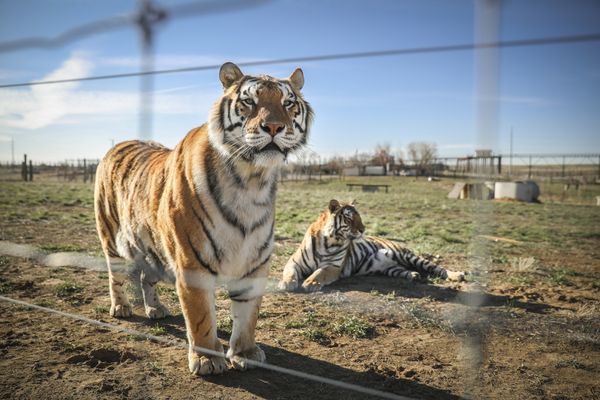
China’s BYD is making waves on the global scene. It made headlines by beating Tesla at its own game. It’s reporting huge profits and has promised megawatt charging (though so far that’s only for China), something no one has done before. In Europe, the firm is aggressively expanding, promising reasonably priced EVs and hybrids for all who want them.
BYD’s tech is sound, its software works and build quality is never wonky. For some, the newcomer is hard to ignore, with many of its cars being pretty spectacular.

The Sealion 7 brings BYD’s tech to the family SUV space. It’s big, full of toys, and has a whacking great battery… Should the old guard be worried?
(Full Disclosure: BYD loaned me a Sealion 7 for this review.)
2025 BYD Sealion
What Is It?
Gallery: 2025 BYD Sealion Review: A Tad Boring







The BYD Sealion 7 is a big SUV with a really dumb name. Sounding like it belongs in a kids book aside, it comes with some pretty impressive performance specs and loads of space. With the Sealion 7, BYD’s looking the Tesla Model Y, Kia EV6, and Hyundai Ioniq 5 squarely in the eyes and hoping they’ll blink first. It looks pretty cool all told, thanks to the firm’s swoopy design language.
What Are The Specs?
There are two drivetrains available. The first is a rear-wheel-drive, 318-horsepower version with 280 lb-ft of torque, an 82.5 kWh battery and a max range of 300 miles (482 km, WLTP). Or you can have both axles driven, providing 530 hp and 509 lb-ft, All-wheel-drive models come with either an 82.5kWh battery in in Design AWD trim or a 91.3kWh unit in Excellence AWD spec. They promise 283 miles (455 km) and 312 miles (502 km) of range, respectively.

Each comes with BYD’s fancy Blade Battery, which means not only can it survive things like nails being fired directly into it (a common occurrence somewhere, I’m sure), but it’s also a structural part of the car and helps keep things rigid. Your max charge capacity changes depending on which battery you opt for: Smaller batteries can accept up to 150 kW while the bigger pack can take up to 230 kW.
Performance is a BYD ‘thing’, and the Sealion 7 isn’t one to shy away from tradition. The RWD car will crack 0-62mph in 6.7 seconds, and head onto 133mph. That’s is decent, but the bigger-battery all-wheel-drive version will get from 0-62mph in 4.5 seconds and manage the same top speed. Much like the quick Seal, BYD’s so proud of its 0-62mph sprint that it put it on the trunk lid to show the world how quick it is. I guess some people must like that sort of thing.
In the UK prices kick off at £46,990 ($61,000 at today’s exchange rates) for the RWD car, topping out at £58,990 ($76,000) for an ‘Excellence’ trim with all the bells and whistles. That’s more than the Tesla Model Y, and neither version offers more range than the American car. But for some, the fact that it’s not a Tesla means none of that matters.
How Does It Drive?
In the Design AWD car you get plenty of toys and all the grunt, so it will likely be a hit. That’s the one we drove. If you’re expecting the ride of your life you’ll be disappointed. It’s a biggish, tall SUV that weighs north of 5000 lbs. A Caterham it is not. Sure, it’s smooth, quiet and incredibly quick when you pin it in sport mode, but at no point will you feel engaged or busy. It’s a family SUV—not a Ferrari-baiting monster, no matter how much BYD wants to make of its mammoth power outputs. Come in with the right expectations.

There are a handful of drive modes to choose from: normal, snow, eco and sport. Unless you’re really in a hurry, you’re best leaving it in either normal or eco and going about your business. Power delivery is silky smooth in either, though in the latter mode it’s numbed to extend range.
The ride is a mixed bag. On the highway and smooth roads it’s just fine. You roll around trouble-free, but it can be a touch spongy in the corners, and oddly tough over the rough stuff. For the UK’s roads, it’s an interesting mix.
BYD’s hope that the Sealion’s speed will turn it into a sports car is misplaced. It’s not the sort of car that’ll excite people who talk about apexes, lap times and other such things. The steering doesn’t excite, and its handling doesn’t leave you tingling. In all honesty, it is aggressively OK to drive. Unless a dragon or ogre has chased you for a portion of your drive, you probably won’t remember a thing about your journey after you get out. It’s A Car, and that’ll be fine for most buyers.

What’s Good?
While the drive isn’t anything to scream about, there are some neat touches that stand out. Its 18.3-cubic foot trunk can hold more than enough stuff for five-passenger load, and the trunk’s aperture itself is wide enough that you won’t struggle to get things in and out unless you have a truly knackered back.
Then there are the gadgets. BYD views itself as a tech company as well as a car company. If you’re terminally online you’ll have seen its jumping supercar leaping over potholes, or maybe driving itself around a race track. While the Sealion 7 can’t bunnyhop its way around town, it has a few neat tricks.

Its 15.6-inch infotainment screen can rotate from portrait to landscape at the press of a button (or via voice control), so you can choose your own adventure. While Apple CarPlay isn’t supported vertically, the car’s inbuilt tech is supported either way up. Of course, to enjoy it, you have to accept that it’s an all-touch interface. To get to the A/C controls you have to go to a separate screen to fiddle around. If buttons were available it would be easy, but it’s a bit of a faff.
But BYD has packed in plenty of tricks. In the Sealion 7 if you place three fingers on whichever screen you’re on (music, nav… anything) and drag them up and down you’ll change the temperature, moving them left to right will adjust fan speed. It’s a really neat touch, and something other screen-heavy manufacturers should copy ASAP.
Finally, the build quality and materials inside are cracking. You’d expect it for a car in this class, sure, but trying to find where the ‘budget’ materials are will take some digging.

What’s Not Good?
As with a lot of modern cars, the rear visibility in the Sealion 7 is woeful. It comes with a backup camera, and all the sensors available to man (ish), but turning your head to see out the back is met with a sliver of glass that sits quite high. It’s broadly useless if you like kicking it old school.
Besides that, the Sealion 7 does almost everything well enough. It doesn’t really excel in any area, but neither does it fall down catastrophically either. It’s simply not very exciting, which isn’t necessarily the worst thing in the world. But if you’re spending huge sums of money on a car you’d hope to remember something about it after you’ve parked up.
With the 82.5kWh battery on board, a 283-mile range isn’t very good, either. Yes, that’s the WLTP number (on a drive in the Design AWD spec in mixed conditions it managed 2.8 miles per kWh… down on BYD’s quoted 2.9 - albeit not by much), but c’mon, BYD. As the world leader in EV sales, you’d expect them to be pushing more boundaries.

And while being stuffed with the latest and greeted Advanced Driver Assistance Systems (ADAS) is a win, the Sealion 7’s fatigue awareness camera is a bit oversensitive. Plonked on the A-Pillar, it sees if your eyes aren’t directly on the road and will let you know they should be. When you’re looking at the big ‘ol screen to fiddle with the maps or music and it goes off… it’s irritating. Especially because you have to look at the screen to do much of anything.
How Is It As An EV?
It’s fine. Charge speeds, while not as quick as some rivals, are more than enough for most people. The tech inside is slick, and does what it needs to do without fuss. BYD’s more than got its eye in when it comes to building solid EVs now. It’s just a shame this one isn’t more exciting.
BYD Sealion 7: Verdict
Slightly more expensive than a Tesla, not quite as efficient and from a brand that doesn’t quite carry the same caché… all the makings of a car that’s doomed to be overlooked. In reality, its good looks will do some heavy lifting for it, as will the fact it’s not a Tesla (See: the news).
For driving enthusiasts, it’s not going to appeal. But for those searching for a car that does everything without any fuss or drama, it’ll do just fine.







